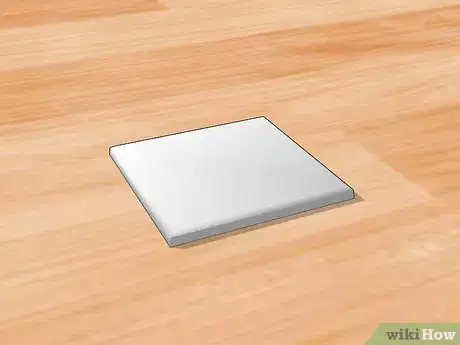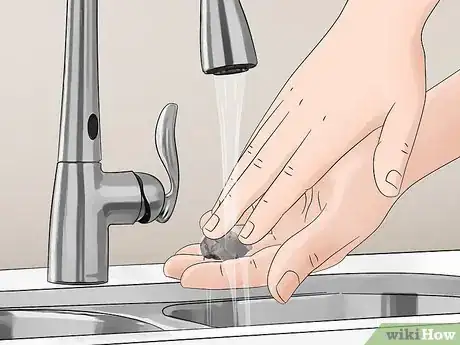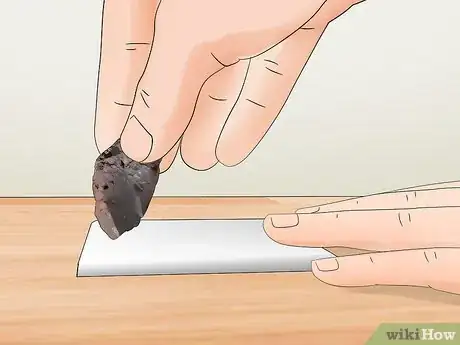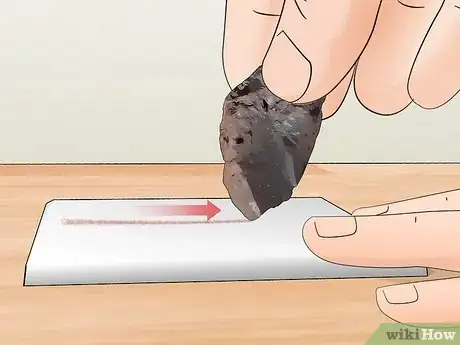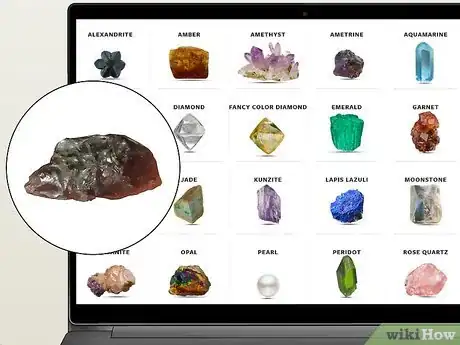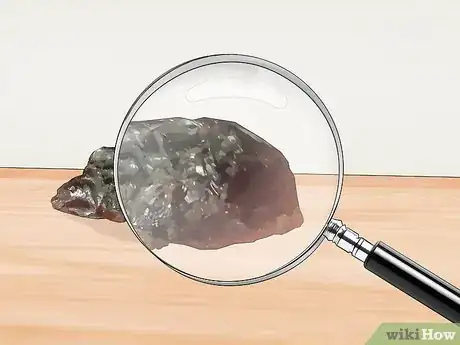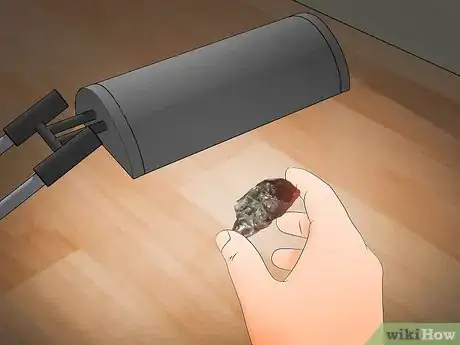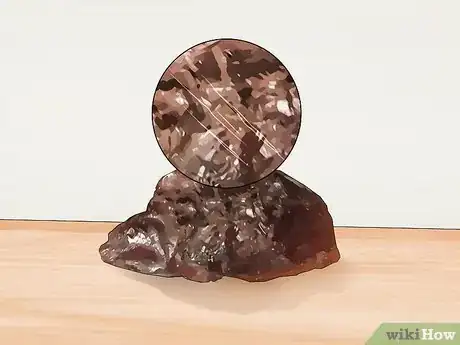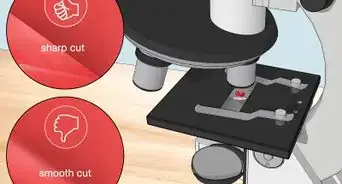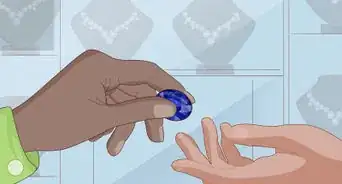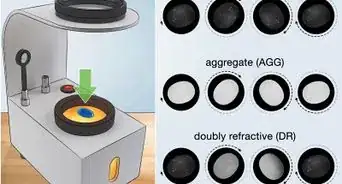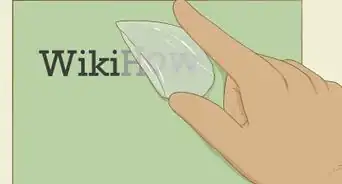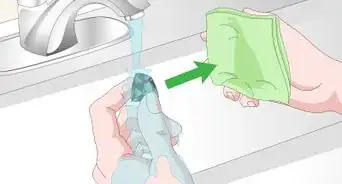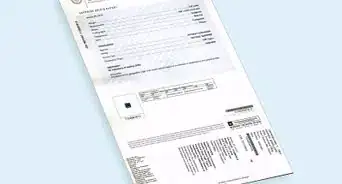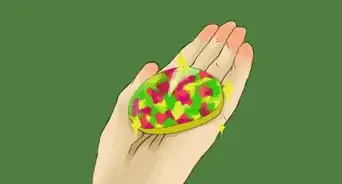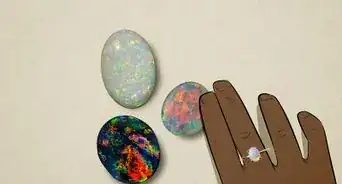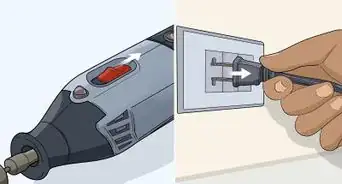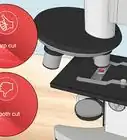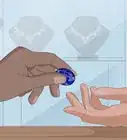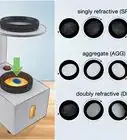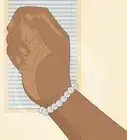This article was co-authored by Alisa Thorp. Alisa Thorp is a Jewelry Design & Ethical Gemstone Expert and the Co-Founder of Mercurius Jewelry. With over 15 years of experience, she specializes in responsibly-sourced fine jewelry. She holds a BS in Environmental Science from Columbia University and is studying gemology at the Gemological Institute of America (GIA).
This article has been viewed 53,226 times.
Identifying an unpolished, rough gemstone can seem difficult, but it really isn’t! You can use a streak test to determine the color of the gemstone’s powder, which is more accurate than looking at the color on the surface of a rough gemstone. You can also look for features on the surface that you can use to compare to a gemstone identification chart in order to identify the stone.
Steps
Conducting a Streak Test
-
1Set a streak plate flat on a table to perform a streak test. A streak test is a method used to find the color of a stone or mineral in powdered form. A streak plate is a square of unglazed porcelain that has a rough surface you can use to help identify the gemstone. Lie the plate flat on a workbench, table, or desk so it’s stable.[1]
- You can find streak plates at your local hobby store or online.
- The color of a gemstone’s powder is often more reliable than the color that you see on the surface of the rock.
Tip: If you don’t have access to a streak plate, use an unglazed ceramic tile to test the streak.
-
2Wash and dry the stone to remove dirt and dust. Clean the gemstone so dust, dirt, or any other debris can’t contaminate the streak test and make it difficult for you to identify the stone. Rinse it well under clean water and use your fingers to rub the surface clean. Then, dry it well with a clean towel.[2]
- The stone needs to be dry in order to leave behind enough dry powder that you can use to identify it.
Advertisement -
3Place a point of the gemstone against the streak plate. Hold the gemstone in your dominant hand and use your other hand to stabilize the streak plate. Choose a point or protrusion on the stone that you can use to make a thin line across the plate. Hold the point against the plate.[3]
- Choose a spot on the plate near a corner so you have enough room to drag the stone across the surface to form a streak.
-
4Drag the gemstone across the plate in 1 motion. Apply pressure with your dominant hand and pull the stone over the surface of the streak plate. Use 1 motion to grind the stone over the surface and leave behind a thin line of powder from the stone.[4]
- Don’t scrape the stone back and forth or it can alter the appearance of the streak and make it more difficult to identify.
-
5Examine the streak to determine its color and identify the gemstone. Look closely at the streak on the plate and try to identify what color it is. Then, consult a streak test chart to identify the gemstone based on the color of its streak.[5]
- Perform the test again using a different part of the stone to confirm the streak test.
- A few major gemstone streak colors include light blue for azure, white for gypsum, and greenish-blue for turquoise. For more streak colors, visit https://thehappyscientist.com/files/downloads/minidchart.pdf.
Inspecting the Surface
-
1Use a gemstone identification chart to compare features. A gemstone identification chart will have pictures and descriptions of rough gemstones that you can use to help identify your gemstones. Determine the color, luster, shape, texture, and other characteristics of your rough gemstone and then compare them to the chart to identify your gemstone.
- Use multiple features to help identify your gemstone more accurately.
- Purchase an identification chart from a hobby store or search for one online that you can reference.
Tip: For a virtual gemstone identification chart, visit the Gemological Institute of America’s website at https://www.gia.edu/gem-encyclopedia.
-
2Look at the color of the stone to try to identify it. The color of the stone isn’t the best indicator of what rough gemstone you have, but it can be a useful trait to help you identify it. Look closely at the surface of the stone to determine its color. If there are any cracks or breaks in the stone, check to see if the interior of the stone is a different color as well.[6]
- Compare the color of your gemstone to the identification chart to find a match.
- Pay close attention to any streaks or bands as well. For example, turquoise may appear as a blue streak in a normal-looking gray rock.
-
3Hold the stone under a light to check its luster. Luster refers to the way the surface of the stone reflects light. Hold the rough gemstone under a lamp and look closely at the surface to determine its luster. You can then reference a gemstone identification chart to compare the luster of your gemstone to those on the chart.[7]
- Tilt the stone back and forth under a lamp to reflect light across the surface to help you see the luster.
-
4Examine the surface for imperfections or markings. Surface imperfections or markings such as ridges, grooves, plateaus, pits, etching, or other defects are features that can help you identify a rough gemstone. Study the surface of the stone carefully and note any imperfections on the surface. Compare them to your identification chart to help determine your rough gemstone.[8]
- For instance, amethyst and calcite can have spiral growths that form low mounds on a flat surface of the stone.
Expert Interview
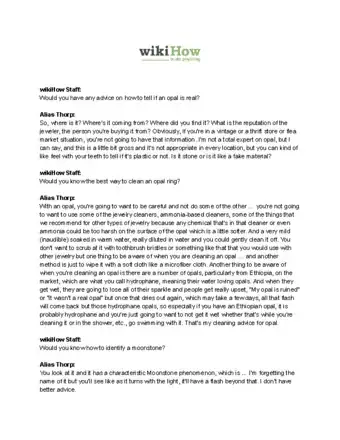
Thanks for reading our article! If you'd like to learn more about identifying gemstones, check out our in-depth interview with Alisa Thorp.
References
- ↑ https://geology.com/minerals/streak-test.shtml
- ↑ https://geology.com/minerals/streak-test.shtml
- ↑ https://geology.com/minerals/streak-test.shtml
- ↑ https://sciencing.com/indentify-rough-gem-stones-5079915.html
- ↑ https://sciencing.com/indentify-rough-gem-stones-5079915.html
- ↑ https://sciencing.com/indentify-rough-gem-stones-5079915.html
- ↑ https://sciencing.com/indentify-rough-gem-stones-5079915.html
- ↑ https://www.gemstonebuzz.com/education/how-to-identify-rough-gemstones/
